New Year’s Traditional Food in Japan
Top photo: ありのまま4youさん on PhotoAC
One week before Winter Vacation took place in one of the junior high schools in the West Part of Tokyo, I was tasked to do a lesson about New Year in the Philippines, my home country. The 2nd Grade teacher wants my lesson to have a sense of cultural exchange in which I should be able to share some aspects of my culture, particularly our New Year’s traditional food. After my presentation which included Listening, Reading, Defining some new vocabulary words and showing some photos, it was time for them to have a group discussion and afterwards, Q and A.
I never thought that this topic would turn out to be the most interesting for them. For our past lessons, it was always like this. Sharing different ideas and traditions.
At the end part, we had Writing. It was time for them to share with me some of the Japanese New Year’s food. How it is being prepared and what’s the meaning of having that food and eating it on New Year’s Day. I handed them worksheets for them to write and express their ideas. I was thrilled looking at them writing enthusiastically, as if they were so excited to share their usual food on New Year’s Day. I did not leave the school till I finished checking all their very interesting paragraphs written in their worksheets. I wrote a very inspiring message at the bottom of their paper.
Osechi Ryori
And here are the top New Year’s foods in Japan, as what the students wrote in their paragraphs. First, they have the Osechi Ryori. It is a collection of foods that is to be shared for everyone in the family on Shogatsu or New Year’s day. It is usually exquisitely prepared in four layered bento boxes called jubako.
Each food has a meaning and a purpose. The sweet TamagoYaki folded like a roll of important documents or paintings, represents a wish for cultural development and learning. Second, is the golden Dango or sweet dumplings represents wealth as it is gold in color. They also have the Kohaku Kamaboko or boiled fish paste which should be in pairs and in red and white color. Red is to prevent evil spirits while white is for purity.
Konbu-maki should be in the box as well as it represents joy and happiness. Kobu symbolizes many offspring so they hope to have more childbirths in the coming year. In relation to this, Kazunoko should be in the box for a wish to have many children. Another one is a big shrimp which has a long antennae for long life. The sweet black beans are to wish for good health and energy to work well.
There is also sweetened baby sardine fish called Tatsukuri if you wish to have a bountiful harvest from your rice fields if you are a farmer. The Renkon or lotus root for a good future and Kikuka-Kabu or turnip to drive evil and allow you to live longer. Another root crop is Gobo for strength and stability. Lastly, a big sea bream fish or Tai to wish for prosperity and happiness.
Toshikoshi Soba
Typically eaten on New Year’s Day in Japan is Toshikoshi Soba, a Japanese noodle bowl dish. Soba is made of buckwheat that’s why it is a little brownish in color. The length of the noodles represents longevity. They usually prepare it with hot dashi broth and green onions and eat it warm. Soba means year-crossing noodles. Cut it with ease while eating and you will cut off negativity in your life.
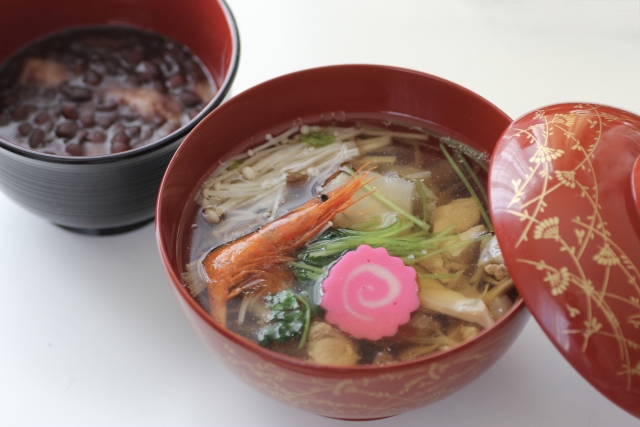
Ozoni and anko-mochi. Photo by mie06
Mochi
Third is the Mochi. This is one of the most important foods in Japan on New Year’s Day. When you say, mochi, in Japanese, it means to have or to hold. They believed that by eating Mochi, it helps you achieve good fortune. There are many ways to prepare and serve Mochi.
There is Kinako mochi with roasted soybean powder and there is a Kagami mochi, this type is usually prepared to decorate for New Year. It has a daidai or bitter orange on top of two stacked mochi. It is used in a Shinto altar at home as an offering. There is also a fun activity in making Mochi. This is my favorite. It is called traditional rice-pounding tournaments or Mochisuki Taikai. Those who try to do this activity are believed to gain good luck.
Ozoni
Finally, the Ozoni soup. It is a kombu miso-based soup with Mochi, chicken meat, leafy vegetables and yuzu peel that is eaten usually in the morning of January 1st. They said that this is one of the most iconic dishes in the New Year.. Although it has a variety of ways to prepare according to region, it originates in the Kansai area. For all the 2nd Grade Classes, this dish is the most favorite of all.
Sometimes, doing a lesson for our students makes us feel that we are sharing and imparting our knowledge to them. That is what we are as a teacher supposed to be. But now I realized that it is not only me who is teaching them. It is them who are giving me so much information and learning. I really learned so many things from the students. And so far, this is my most favorite topic because it is about sharing traditional food that we eat on the most celebrated occasion in the world, New Year’s Day.
Photo Credits:
Top photo: ありのまま4youさん on PhotoAC
Additional photo: mie06さん on PhotoAC
All additional images provided by the original author, used with permission
All other content (text) created by the original author and © 2022 MUSUBI by Borderlink
Top photo by Jad Limcaco on Unsplash
For most of us, unless you are living the lifestyle of a Buddhist monk or nun, the indulgence of food and drink during the festive season usually leads to vows of sobriety, and resolutions to lose weight and do more exercise in the new year. But what are the choices?

Eyesores of Tokyo!
Let’s see… heading to a gym is not as simple and straightforward as it was pre-Covid, and can put a dent financially in your wallet, so what other exercise options are there? Jogging is something many people take up to get fit, but for me, running is a last resort in any situation. Sure, if a rabid, wild animal was in pursuit of me then I would make a quick dash for it, but as a fitness regime it literally looks too much like hard work. Plus, have you ever seen a happy jogger?
So, if you are looking for an exercise that is good for you, but not over strenuous, can be undertaken in an open environment, free from nasty viruses, and costs nothing, then I recommend, WALKING!
Walking? Yes, Walking!
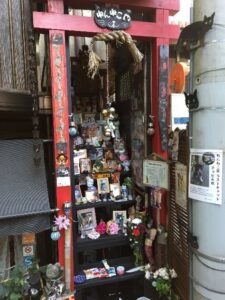
Cat shrine, Yanaka
If you start doing brisk walking (5km/hour, or 3miles/hour) on a regular basis it can help towards losing weight, burning off excess calories, building stamina, and if done correctly, will not be a strain physically on your body.
But for many, the excuse of not doing regular exercise is the lack of free time. Well, if you are travelling by train or bus to school, you could get off at an earlier stop and walk the rest of the way. It will even save you money!
Just 10 minutes of brisk walking will benefit you, but ideally if you can walk between 30 minutes to an hour per day, you will really notice the difference to your health.
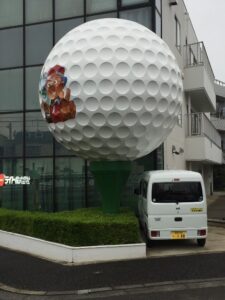
Giant golf ball, Komagome
When at a train station or shopping area, don’t use escalators or elevators, use the stairs. Stair climbing has aerobic benefits and tones muscles in the leg and buttocks, builds and strengthens muscles in the lower back, and burns calories!
To get the most out of stair climbing try and climb as fast as possible, taking two steps at a time.
Walking is also a great way to discover your local area. Wherever you walk there is always something new to see if you look closely, which you can do when walking, as opposed to running.
The Sights You’ll See
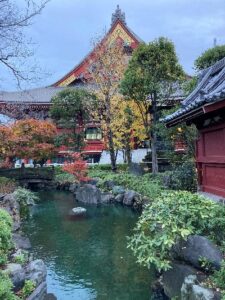
Autumn colors, Senso-ji
If you are in an urban area, try and find a park to walk through, and experience the changing seasons on your daily walk. I regularly walked through Ueno Park and Asakusa’s Senso-ji in Tokyo on the way to my schools, and have seen gorgeous cherry blossoms in spring, beautiful autumn colors in the fall, groups of pensioners energetically working out, old men praying at a shrine, and a lively group of homeless guys cracking open the first Chu-Hi of the day!
Even what appears to be a typical Japanese city scene of concrete jungle can yield interesting sights. Just get off the main roads, and hit the back streets, that’s where the fun starts.

Avant-garde residential design, Sugamo
For example, Japanese houses come in all shapes, sizes and designs. Sure, many of these are pretty non-descript, but there are many unique designs out there waiting to be discovered.
And other less salubrious housing ‘options’ can greet you on your jaunt around the streets of Japan!
On my way to school, I’ve experienced sumo wrestlers doing stretching exercises in the street, an old woman giving me her life story whilst swigging from a sake bottle, a roller-skating grandad wearing just pink hot pants and fishnet stockings, shrines dedicated to cats and turtles, and a clandestine video shoot of, how should I phrase it, an ‘adult ‘nature!
Who says walking is boring?
Photo Credits:
Top photo by Jad Limcaco on Unsplash
All additional images provided by the original author, used with permission
All other content (text) created by the original author and © 2022 MUSUBI by Borderlink
Top Photo: pandaloveさん on PhotoAC
Christmas in Japan is celebrated in a very different way compared to other countries. How do we celebrate Christmas in Japan? What are the best things to do on Christmas?
Since only one percent (1%) of the whole population is Christian, December 25th is not a National Holiday. But that does not mean that we can not feel the spirit of Christmas. As a matter of fact, in Japan as early as November, we can already see the main streets dressed up with colorful Christmas lights. Although they commonly call these as Winter Illuminations, these have been popular attractions around Christmas until New Year in all of the main cities in Japan. And I recommend going out and exploring the streets of Japan during the Holiday Season.
Christmas Lights
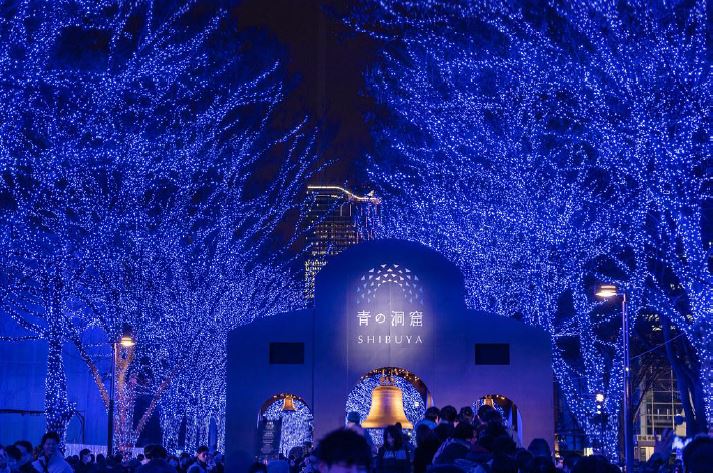
Photo provided by W.A. Hori
In the Tokyo area, we can witness beautiful illumination displays in Shibuya at Miyashita Park’s Rooftop Garden. There’s a beautiful huge Christmas Tree and Purple lights. And closer to Shibuya is Harajuku’s Omohara Christmas Illumination where there are more than 20,000 lightbulbs formed like a starry forest and shooting stars.
Omotesando Illumination is also famous for its champagne-coloured led lights. But there’s a lot more in Tokyo aside from what I have mentioned. You just have to search and find your top picks because most of the areas that have bright illumination displays are shopping and dining places as well. Yes, Christmas in Japan is also about shopping, eating and drinking.
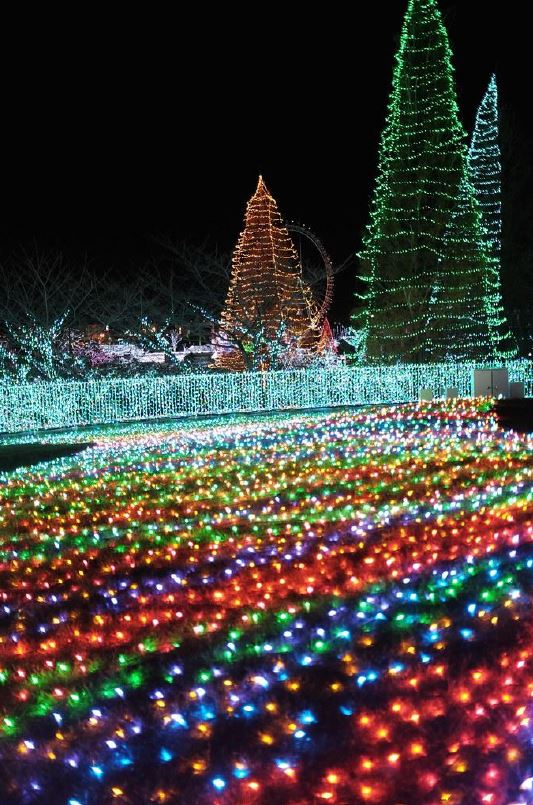
Photo provided by W.A. Hori
But if you prefer to visit and spend the Holiday Season in the countryside like Osaka, there’s the famous Midosuji Illumination, the perfect place also for shopping for your favorite luxury brands. I have not been to other Illumination displays except those that I have shared with you, but one thing for sure, almost all of the prefectures have a lot to offer every Christmas in Japan.
Not far from Tokyo is the Jewellumination at Yomiuri Land where we can witness the different colors and themes and a dance show in lights and music. Try exploring those places too.
Christmas Cakes
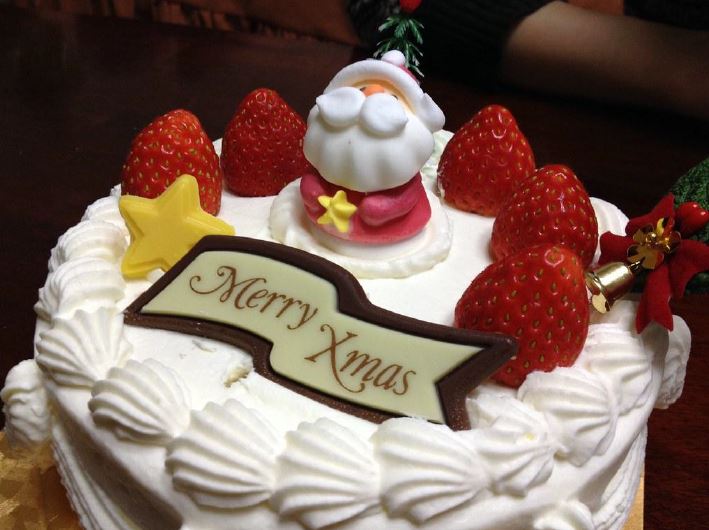
Photo provided by W.A. Hori
On Christmas day, they give presents to their loved ones and have Christmas meals with family members or friends. Japanese people have Christmas cakes on the table. After work on the 24th of December, we can see a lot of people in a queue in a cake shop, all buying a cake.
And these are not ordinary cakes. These are specially designed for Christmas. You can see beautifully and artistically done Christmas themed cakes in different flavors. And this is one of my most awaited moments on Christmas in Japan. I have to enjoy tasting different kinds of Christmas Cakes. Good thing, cakes in Japan are not that sweet. We can manage our sugar intake.
Christmas Dinner
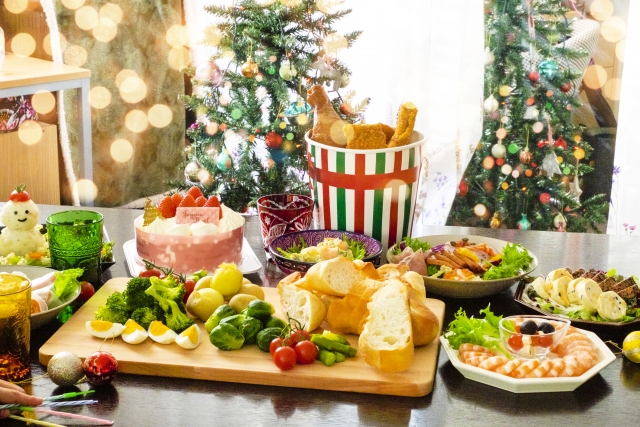
Photo by cheetahさん
Have you heard about KFC Fried Chicken on Christmas in Japan? Yes, it is a big thing on Christmas for children. This week, I had Reading Comprehension and Writing in my English Class in 2nd Grade Class in Junior High School. The Japanese Teacher asked me to write three simple paragraphs about what it is like Christmas in the Philippines.
They were so amazed about the food that the Filipinos prepare for Christmas dinner. It was so strange for them to have those various traditional foods on the table. Then after that, it was their turn to write something about Christmas in Japan. I was thrilled to know that KFC Fried Chicken is their popular food for Christmas dinner aside from their Christmas Cake. They usually buy a Christmas Party Bucket.
Christmas in Japan may be different from my country’s usual traditions, but there is one thing I noticed. It has the same spirit of merry-making, gift-giving, and spreading happiness and love to all.
Merry Christmas, and a happy holiday season!
Ready to spend next Christmas in Japan yourself? You can in 2023 by becoming an Assistant Language Teacher with Borderlink! Even if you’re living overseas, there’s still time to apply!
Photo Credits:
Top Photo: pandaloveさん on PhotoAC
“Christmas Dinner” photo by cheetahさん on PhotoAC
All additional images provided by the original author, used with permission
All other content (text) created by the original author and © 2022 MUSUBI by Borderlink
Top Photo: ryokai7さん on PhotoAC
Introduction
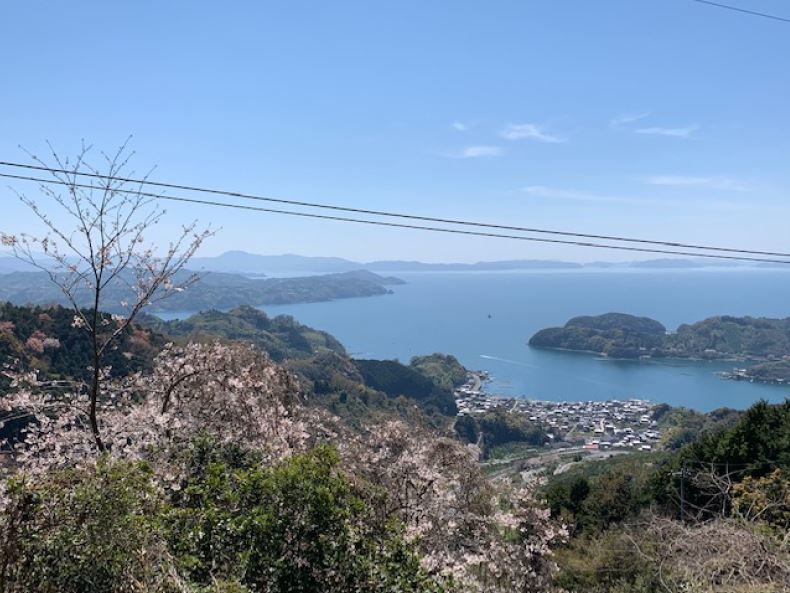
There are many exciting places throughout Japan. Perhaps you’ve already ventured to Tokyo, Kyoto, Osaka and Hokkaido. Have you ever embarked on a journey to Ehime, the land of fresh oranges? A little place, I like to call home away from home.
Where is Ehime Prefecture?
Ehime Prefecture is located in Shikoku island just west of the Kansai area. It borders Kagawa, Tokushima and Kochi. There are many ways to visit Ehime via plane, ferry, bus or train. I recommend taking the scenic route from the Setouchi Shamanami Kaido Expressway. The view of the sea and mini islands is breathtaking. It’s very popular among tourists and locals to go cycling along the highway as well!
Matsuyama City
There are many popular local attractions. It is a must to stay in the main city of Matsuyama. There, you can visit the beautiful Matsuyama Castle and enjoy the view of the
city.
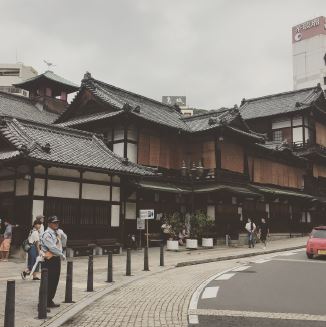
After a nice hike up the castle, you can relax at one of Japan’s oldest and most famous hot springs, Dogo Onsen. This hotspring has been around for over 1,000 years. Fun fact, the setting of the Ghibli movie, “Spirited Away” was inspired by this hot spring! I encourage you to visit! After a nice bath, you have to try the fresh orange juice! It’s simply divine!
Uwajima
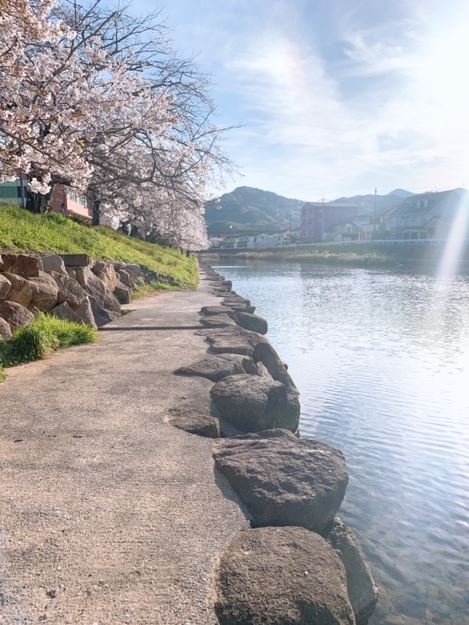
Just south of Matsuyama City, is the small fishing city of Uwajima. This area is known for its seafood, especially taimeshi. This charming, rural city has a lot to offer! During the day, you can visit Uwajima Castle, one of the few remaining in-tact castles from the Edo Period.
The best time to go is during the cherry blossom season where you can enjoy a nice picnic right outside the castle. Uwajima City is very rich in nature, so it’s a great place to unwind and feel at ease. I also recommend staying at the camping grounds just outside the city. You can easily rent a cabin or tent and enjoy the local hot springs.
Conclusion
With summer vacation right around the corner, why not take a nice trip to Ehime? It would be a great way to discover a different area in Japan. To be frank, it’s a great place to visit especially if you are in need of a break from the city.
Photo Credits:
Top Photo: ryokai7さん on PhotoAC
All additional images provided by the original author, used with permission
All other content (text) created by the original author and © 2022 MUSUBI by Borderlink
Top photo by セカイの歩き方さん on PhotoAC
Living in Japan as a person from a different culture can sometimes be hard, especially when it comes to dietary restrictions or requirements. For Muslims, the most basic of these are not eating pork and not drinking alcohol.
A lot of Japanese food has pork in it, and soy sauce also contains a very small amount of alcohol. In Utsunomiya where I live there are no halal shops, or places to buy halal meat. For people who live outside Tokyo like me, it will be necessary to buy halal food online, because eating fish all the time can get a little boring.
Here is my quick list of places where you can buy halal food online:
Amazon
No surprise here! Amazon offers a selection of halal food such as sausages, curry, ramen, chicken and soy sauce. Searching for whatever you want to buy by including ‘halal’ (ハラール) will bring up a variety of food you can buy.
Nasco Halal Food
You can buy all kinds of halal food, here including meat. They also sell food from Africa and South Asian countries and deliver to all prefectures in Japan. The site can be navigated in English.
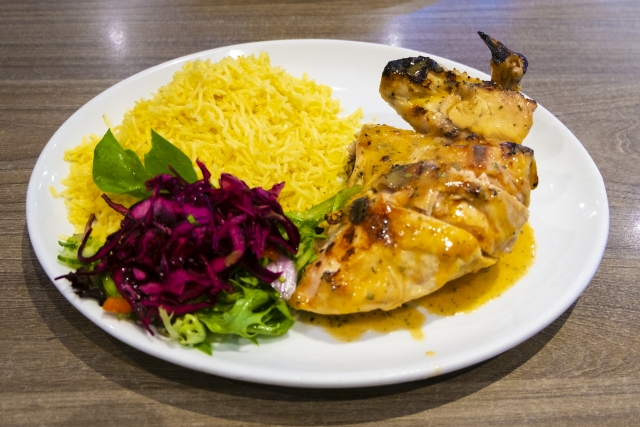
Photo by cheetahさん
Shinjuku Halal Food
This online halal shop sells a variety of halal food including frozen foods. They also deliver everywhere in Japan. They have a physical shop in Shinjuku, Tokyo as well.
Shop.ajinatori.jp
This online shop mainly sells frozen foods. They sell ham, sausages, chicken, and gyoza which are all halal-friendly.
Moving to a new country can be daunting even if you have always dreamt of doing so, but eating food should not be amongst the things that we find hard to do. Hopefully, this list makes it easier for people who want to meet the halal requirements but weren’t sure how to do so. Good luck, and good eating!
Photo Credits
Top photo by セカイの歩き方さん on PhotoAC
Additional photo by cheetahさん on PhotoAC
All other content (text) created by the original author and © 2022 MUSUBI by Borderlink
If you asked me the question “what do you know now, that you wish you had known before you came to Japan?”, there would be a number of different predictable answers. How to eat sushi without dropping it? How to read complicated kanji? Or perhaps long list of Japanese manners? Well, as important as all these are, there’s something much more useful in your everyday life that is easily overlooked. That is, how to use a Japanese convenience store.
You may be thinking, “hey we have convenience stores in my country” or “yeah, I think I can handle shopping, thank you very much”. But there are so many hidden uses and hidden gems in a convenience store that you can easily miss if you aren’t aware. Japanese convenience stores, or konbinis as the Japanese say, are a little different. Say for example you need to transfer some money, you’re desperate to find a toilet, or you need to send a fax for the first time in your life. The konbini has you covered.
Essential Phrases
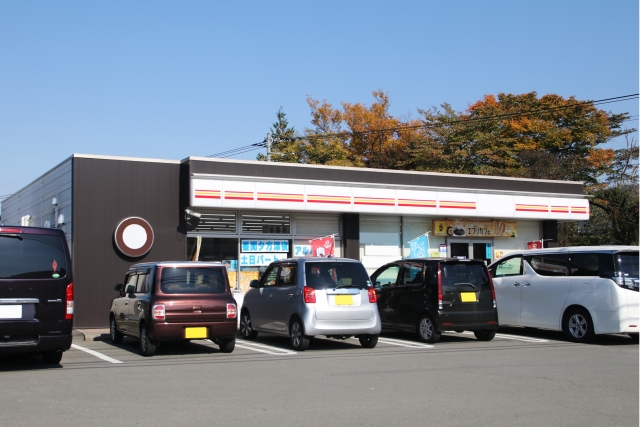
Photo by えこだん
First of all, there are a number of useful phrases you’ll need to know. The first thing you’ll hear upon entering is;
“いらっしゃいませ” (irasshaimase)
This essentially means welcome. Literally, it translates to something akin to “honour us with your presence” a characteristically ultra polite way to say “come on in” or “come here”. This supposedly dates back to the days of market stall holders trying to call over potential customers. However, these days it is often said more in a reflexive manner than with genuine enthusiasm, and who can blame the people working in a store that’s open 24 hours.
If you’re like me, you’ll feel an urge to want to reply with a friendly “hello” or something, but it’s best not to reply at all, which can take some getting used to. Instead, if you’d like to show your appreciation, the best thing you can do is learn some more essential phrases to help you be polite as possible. Here are some handy examples;
“これをください”(Kore wo kudasai) – this one please
“おねがいします”(onegaishimasu) – Please, but a little more polite. Best to use if someone is doing a favour or providing a service
“大丈夫です”(daijoubu desu) – it’s ok. An easy and polite was to say no thank you
“お袋をください” (ofukuro wo kudasai) – a bag please
“持っていません” (motte imasen) – I don’t have something, useful to say if they ask you for a loyalty card
“温めてください” (atatamete kudasai) – please heat this
“すみません” (sumimasen) – excuse me. “ありがとうございま” (arigatou gozaimasu) – Thank you very much. Arguably the two most important words in the entire language, say these as often as possible and you should be ok.
There are of course many, many more examples. But, if you keep Google translate, or Google-sensei – as it is often affectionately called, close to hand, you should be ok. You can always try practicing before you make your purchase and see it as a learning opportunity.
Things for sale
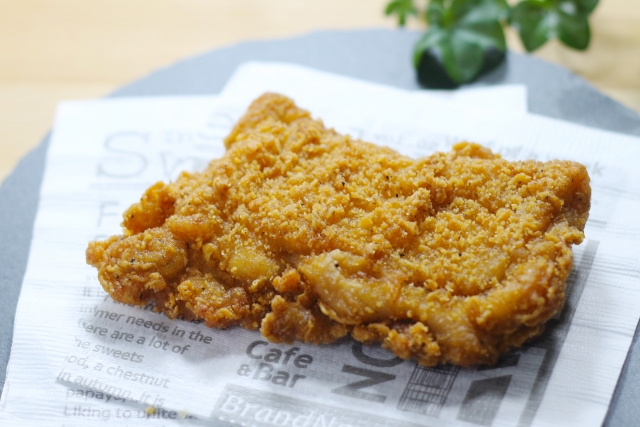
Photo by おくやまさき
there’s an incredibly expansive array of things for sale; from the obvious things, such as onigiri/riceballs, sandwiches and snacks to fresh underwear and socks. You can rest assured in any situation. Convenience store sales are a huge part of the Japanese economy, raking in around 12 trillion yen in 2020[1]. The ten most popular items sold include; Lottery tickets, beverages, fuel, snacks, medicines, hot food, toiletries, ice cream, alcohol and tobacco[2].
Wondering around a convenience store and choosing something new and exciting to try is a cultural adventure in itself, and one that still doesn’t fail to excite and surprise, even after years of living in the country. You might just discover your brand new favourite snack. Or at least learn what to avoid in the future.
But hold on, it doesn’t stop there! There are plenty of other things that your local konbini has to offer. Besides food and drink, there are other essentials that we need to survive. Free wifi is provided at all convenience stores. This may seem a flippant or cynical remark about modern life, but in a foreign country, the use of maps, translations or even making a phone call can mean that heading to a convenience store to get a good connection can be a real life saver.
Picture the scene. You’re in an unfamiliar part of a city you’ve never been to, or a small road in the middle of nowhere, and you see that your phone has 5% battery left. Hurry to your local convenience store and rent out a battery charger pack. You’re saved.
There are plenty of other things to make use of, for example, withdrawing money, transferring money or paying your bills. Not only that, you can pay for online purchases with cash and even get your goods delivered to the store, so you don’t have to worry about missing the post. You can even send and receive your luggage, so you don’t have to squeeze on to a packed train with huge bags. You will also find other seemingly antiquated, yet still essential services, such as a fax machine.
If you do find yourself having to make use of this ancient technology, don’t worry, it’s far simpler than it seems. Handily you can select your language, and if you’re British like me, simply grit your teeth, take a deep breath, swallow your pride and press the button marked “American English”. Another handy tip for if you’re lost; kindly ask the person behind the counter to call a taxi for you – much easier than wondering the street looking for one, or stumbling over your words on the phone.
The past, present and the future of convenience stores
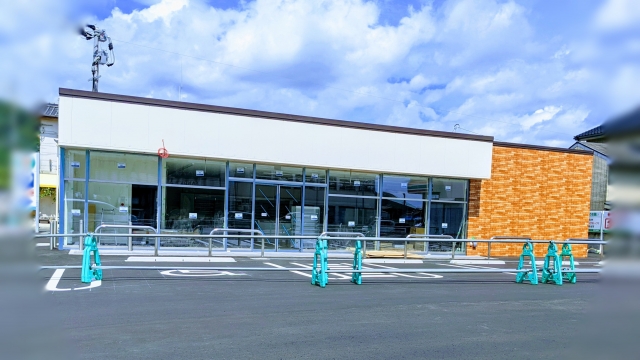
Photo by 自然体
The very first convenience store was opened 1969. Since then, Japanese companies have joined up with US and other foreign retailers to create an original Japanese twist. Over the course of the staggering economic boom in the 70s and 80s, the stores became a national phenomenon[3]. The most popular franchises are Seven Eleven, Family Mart and Lawson, but you’ll find many other rarer or more local variations too.
In total there are more than 50,000 stores, that’s one store for every 3,400 people, in which each of those people spends more than 50,000 yen a year on average[4]. So what is in store for the future of the konbini? It seems highly unlikely that they’ll ever disappear. Indeed companies are already trialling the idea of introducing robots and automation into the stores[5]. Hopefully they’ll manage to find a good balance of keeping their workers and customers happy and cared for.
So whether is the shop on the corner of the street, the tiny booth stuffed inside an underground train station, or a beacon on light on a dark, remote country road, make sure to make the most of all the conveniences on offer.
Sources Cited in this Article
[1] https://www.statista.com/statistics/810889/japan-convenience-store-sector-sales/
[2] https://playport.com/most-popular-convenience-store-products/
[3] https://web-japan.org/nipponia/nipponia19/en/feature/feature03.html
[5] https://asia.nikkei.com/Business/Retail/FamilyMart-preps-1-000-unmanned-stores-in-Japan-by-2024
Photo Credits
Additional photos by えこだん , おくやまさき & 自然体
All other content (text) created by the original author and © 2022 MUSUBI by Borderlink
Top photo: アクティブ少女の非日常 on PhotoAC
If you are reading this, it means that you are on your way to Japan or plan on traveling in the near future. Here are some tips you should consider while you’re here. I’ve been in Japan for 7 months now it everything is still a learning process, but I found it helpful to do these things while being here in Japan. No matter how long you plan on staying, whether it be for a year or your whole life, these are my Top 5 invaluable suggestions for you!
Tip #1: Get an IC Card Once You Land
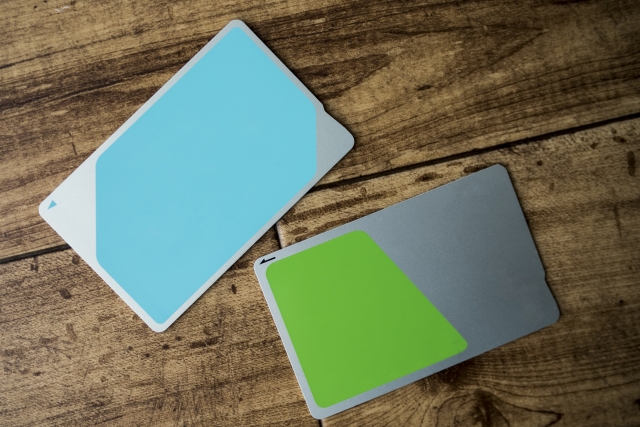
Photo by photoB
Coming in several varieties depending on part of Japan and train line (Suica, Icoca, Pasmo, etc.) this card will allow you to use public transportation all around Japan if the supporting system is available, so carry coins just in case. The IC card not only allows you to use it for transportation, but you can use it for purchasing food or drinks from vending machines and some restaurants. You can have the card on your E-wallet if you don’t want a physical card, but I would recommend carrying the card.
Tip #2: Get Cash!
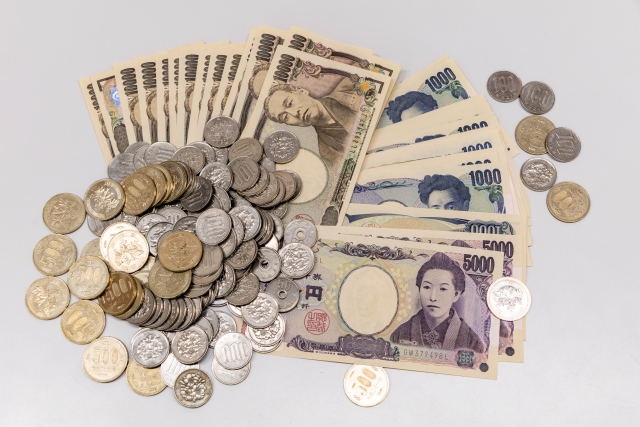
Photo by ゴッツええかも
Ah, yes cash! If you come to a country that is heavily based on the usage of cards you will get used to paying with cash. From my experience when traveling and during my daily life in Japan I use cash. I carry a good amount of cash to make sure that I can pay for things. Now you will be thinking how much should you carry? And is it safe to have a large amount?
For the first question the answer is based on judgment on what you want to do during the day. You can carry 10,000 yen which is the equivalent of 90 USD. This amount should get you through the day of basic traveling but if you want more don’t worry just go to your local convenience store and use their ATM and take more cash out. When it comes to safety, Japan is comparatively very safe, so you generally don’t have to worry even when carrying around a large amount. Just be sure to exercise basic common sense when it comes to handling money (and your personal well-being) and you’ll be fine.
Tip #3: Explore!
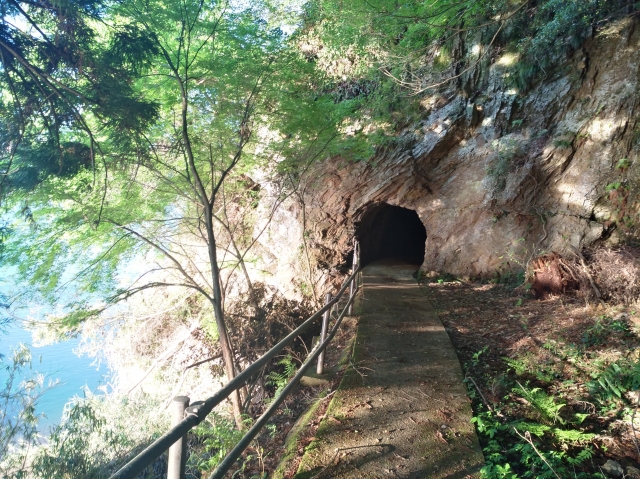
Photo by goudo
This is one of the most important things to do while you are here in Japan, go out and travel. Look around your town and you might find a hidden gem; you can travel and have your mind expanded by all the culture that Japan has to offer. If you don’t know Japanese like me, don’t worry, use Google translate.
Another reason why you want to explore Japan is to keep your mind busy if you feel homesick. You can take pictures and send them back to your friends and family. Festivals are also fantastic to witness, and you will enjoy it. With some research you can travel to different parts of Japan and look, eat and participate in festivals that locals do.
Tip #4: Get a Bicycle!

Photo by photoB
If you know how to ride a bicycle, my advice is to get a bicycle. This method of transportation is one of the most used in Japan. There are fancy bicycles that are electric if you want to go quicker, cheap ones and expensive ones. A bicycle allows me to stay in shape and get to locations in my town that are far by walking.
If you are really into adventures, then you can go to different towns or prefectures just make sure you have a bicycle bag for the train if you don’t want to ride your bike back home.
Tip #5: Just Relax and Enjoy Life!
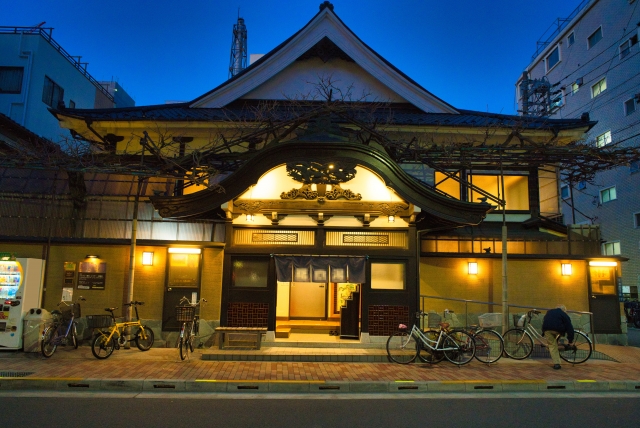
Photo by たぐぱん
If you made it to this last tip that means you have decided to live in Japan. This might be the most important tip of all. You just must enjoy life while you can, look at new things and make the best out of it. There will be times when you are down and sad, but stop for the moment, take a breath and look around.
Go eat some sushi and play games in a Taito Station or take a walk around the park. Try out an onsen! Do what you like to do and make connections with as many people as you can no matter how long you plan on staying in Japan, life will be different, and you can look back and see how far you’ve come along.
In conclusion, these tips should be able to get a better flow with life in Japan, not everything will be easy at first, but you need to make the best out of it. If you fall, you must get up and continue the experience that you are taking part of and fall into a path that you think is appropriate for you.
Photo Credits:
Top photo: アクティブ少女の非日常 on PhotoAC
Additional photos by photoB, ゴッツええかも, goudo & たぐぱん
All other content (text) created by the original author and © 2022 MUSUBI by Borderlink
Top photo: CrioStudioさん on PhotoAC
Have you ever been sued for eating food? Well neither have I! And my taste buds had certainly been uninitiated to international cuisine before coming to Japan from Jamaica.
Therefore, should you be interested in food, trying new things and living in Japan, why not challenge yourself to try some of Japan’s novelty dishes, modern style of buffets (KFC: All you can eat) and of course their most famous and popular cuisine – and if you can guess it, it is indeed the one and only “Sushi”.
So, to really dive into the culture just make a pick of your favorite choice and if you don’t like the Japanese style dishes, you will be happy to know that you live in a country with reliable transportation that can get you to a variety of international style restaurants. But, if you still don’t like what is being offered at the restaurants and miss food from your home country, just first try to close your eyes and go with your senses. Smell and taste new things, explore the different ways to woo yourself and a friend you might meet here, before you think about getting stuck cooking at home.
It’s really hard for me to recommend a particular food to you as, I don’t really know the person that is reading this and your interests, but my name is Shannon. You are most welcome to contact me with any questions you might have or even write an let me know about your favorite food or recommendation. As I myself is a foodie. If you however don’t have the time and you are shy to write back, well It’s my hope you will find comfort with me sharing a little about myself to you.
Firstly, I am a meat lover, particularly that of chicken. Therefore, should you have an interest in fried chicken and a little spicy food as I am. I would recommend you to try the KFC Red Hot which is an original style for Japan and which is seasonal. It reminds me of Jamaica’s KFC which I think is the best. You can also go to one of the all-you-can eat KFC buffets where you can even get spaghetti, curry, soft creams, desserts and free drink refills (the regular KFCs here don’t offer it). Anyways, this would be my first recommended food then tempura, okonomiyaki and Yaki Niku. I don’t like sushi, but I have heard it’s good, so do keep an open mind to challenging yourself to it as well.
Next, on the international side of things – I would recommend that you try Thai cuisine, especially their curry mutton and cheese nan. This cuisine at any location I have been to since being in Japan has been delicious. Then I would recommend you to travel to Yokohama Chinatown and try their amazing dishes and get you some mango ice-cream for dessert.
I have only been living in Japan for about three years, so I still have a lot to savor and experience in this lovely country. By the way, do you like gold? If you do, you might also be interested in going to Kanazawa to experience some of their dishes which include gold. Some examples include; Gold Takoyaki (octopus’ dumplings) and the gold paper Ice-cream. I hear you can also enjoy delicious sushi and sake in that area to help wash down the food and thirst from your explorations. I will be headed there myself, one of these days, to get the experience for myself, so this is also a recommended choice to you.
You might still not be interested in what was written above, but just remember
Your body parts – each have different functions and each part of you is important, so why not give your taste buds, just like your eyes, ears, nose and skin all the wonderful affairs to experience as much as the latter, which already heavily affect your daily moods a chance?
Why not include the provided variety of food and experiences located here in Japan in your challenge to give yourself a boost to excite who you are? Do enjoy your life and the wonderful experiences that come along with. And, let me know about some of these marvelous “Woo’s” of the different foods you have tried, even if they are from your home country.
Photo Credits:
Top photo: CrioStudioさん on PhotoAC
All other content (text) created by the original author and © 2022 MUSUBI by Borderlink
